I was never a smart watch guy myself. So much so that I even warned my relatives never to buy me a smart watch as a gift because they hold little value to me. The last thing I want in life is to receive instant push notifications on my body. Most of them are turned off on my phone anyway.
However, when I first learned about the Ray-Ban Meta Smart Glasses, I instantly knew I would love them. This post is (mostly) a feature review after ~30 days of wearing them.
But first, I'd like to write a little about the competition.
Short History of AI Gadgets
The Meta Smart Glasses aren't the only AI gadget on the market, although I find it currently the best one for its price. This list will definitely not be exhaustive. I tried to collect products that broke the news recently.
Humane AI Pin
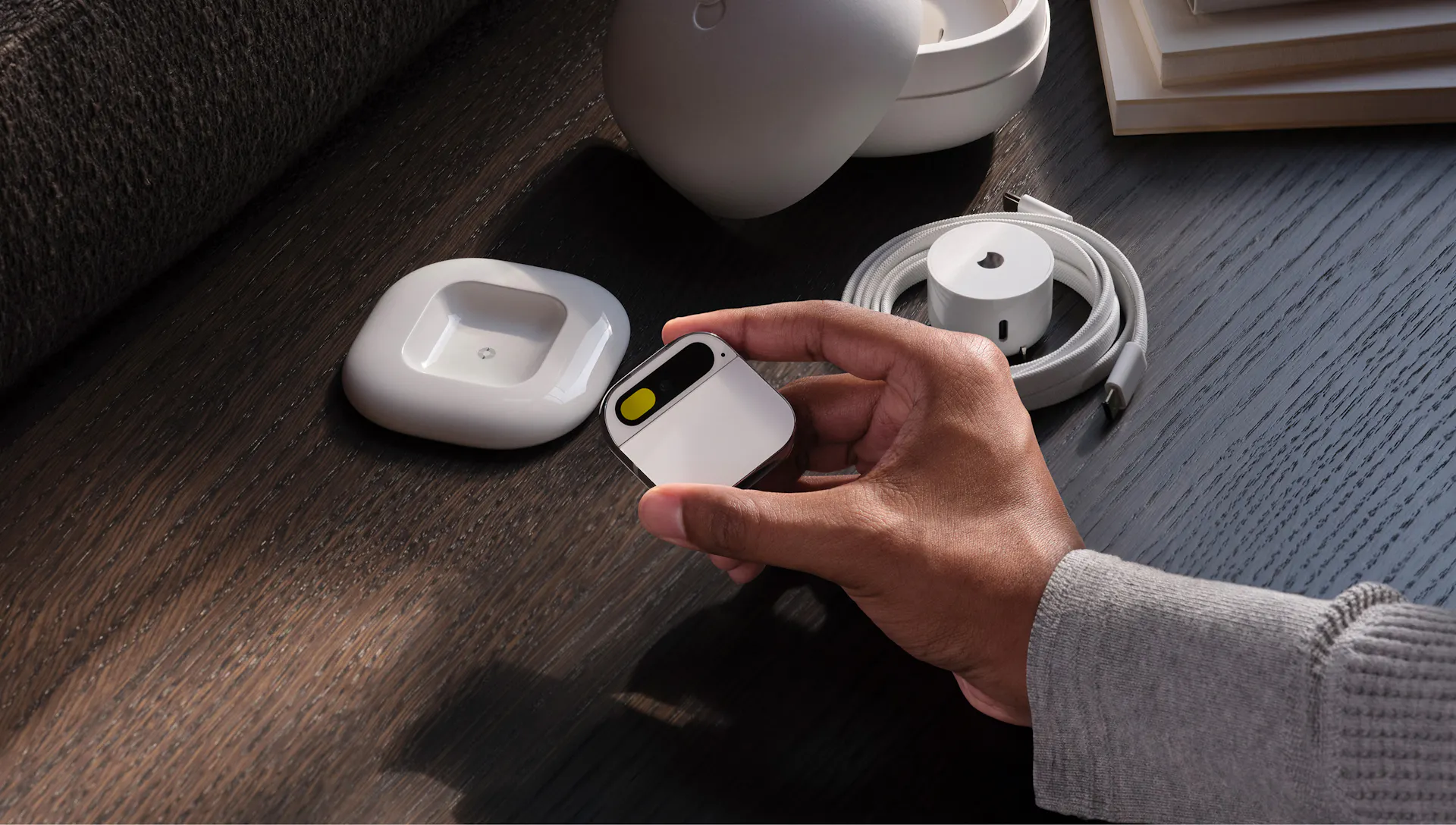
Image from the official website
Humane first officially mentioned the AI Pin at the beginning of November 2023. It was teased for months before that, but the official launch happened on November 9.
The AI Pin is a small wearable that can be controlled by voice, gestures, a camera, and a built-in projector. It's essentially a tiny wearable computer with access to various AI models.
After the launch, it looked promising; everyone was talking about it, and the product finally started shipping in April 2024.
Then, MKBHD reviewed it and destroyed any possibility that the AI Pin could become an everyday product in the near future. Since then, many people have reached the same conclusion, and the trend got to a point where more people were returning Pins than purchasing them. Things turned out to be so bad that Humane also started considering selling the company.
Rabbit R1

Image from The Verge
The Rabbit R1 was the next AI gadget to be released. It appeared on the market on January 1, 2024, and started shipping at the end of March of the same year.
Similarly to the previous product, the Rabbit R1 was also reviewed brutally by MKBHD.
The Rabbit R1 is not a wearable, unlike the Humane AI Pin. It is a device you have to carry with you that can interact with your apps with the help of AI. However, at the time of writing this, it supports less than 10 apps in total. It is not a revolutionary product (yet).
Google Glass
The Meta Smart Glasses aren't the first in the smart glasses category, either. Google was among the first to introduce its smart glasses, Google Glass, in 2014, but similar to many Google products, they were killed pretty soon the next year, in 2015. There were other companies before Google, although I can confidently mention that Google Glass was the most popular back then.
Some reasons it has failed include a price tag too high for the masses to buy and privacy concerns, such as the wearers' ability to record others without notifying them.
The latter is still a concern with the Meta Smart Glasses, although I think the main problem with the Google Glass was that it was too early, and the world was simply not ready for it then.
Okay, now that we have checked out other products with similar feature sets and promises, let's see what Meta has manufactured.
How I Got My Meta Smart Glasses
I learned about the Meta Smart Glasses months ago, somewhere at the start of 2024. I instantly knew I needed them, and I quickly realized that they would be harder to get than I thought. There is simply not a single store in Hungary that sells them, and neither do companies from foreign countries ship them to Hungary. By the way, I was also a fan of Google Glass, although I was too young back then to get one for myself.
Anyway, I started thinking about Plan B: getting it from a foreign country. I started searching for stores in countries where relatives will travel to or currently live, and maybe they could buy one for me. However, most stores were out of stock and only offered preorders within seven days of arrival at the store. That was too much. Also, I wanted to try it on before buying it.
Then I realized I would be in the UK for two weeks in the middle of July to teach two courses. I quickly found there are plenty of Ray-Ban partner stores there. I only had to find a single store that had one item in stock. However, I wasn't lucky with any of them.
My last chance was to find it at the Birmingham airport. The first store had a Ray-Ban section but no smart glasses; However, the next one had them featured in the middle of the store in a glass cabinet. I told the others with whom I was traveling to please sit down for a few minutes because I would definitely buy the glasses here. I just want to try them on and ask a few questions about them from the salesperson in the store.
And that's how I got my Meta Smart Glasses for £379. There was definitely an airport upcharge in the price, but it was still worth it. Here is what I got for its price.
First Impressions
My first thought after putting the glasses on was that this is the closest we've got so far to Tony Stark's E.D.I.T.H., the glasses with AI support that Peter Parker receives from him in Spider-Man: Far From Home, although without the augmented reality part.

Image from Marvel Official
My second thought was that the glasses feel surprisingly light but durable. Their temples are solid, and the hinges do not allow sideways movement in directions they are not supposed to move.
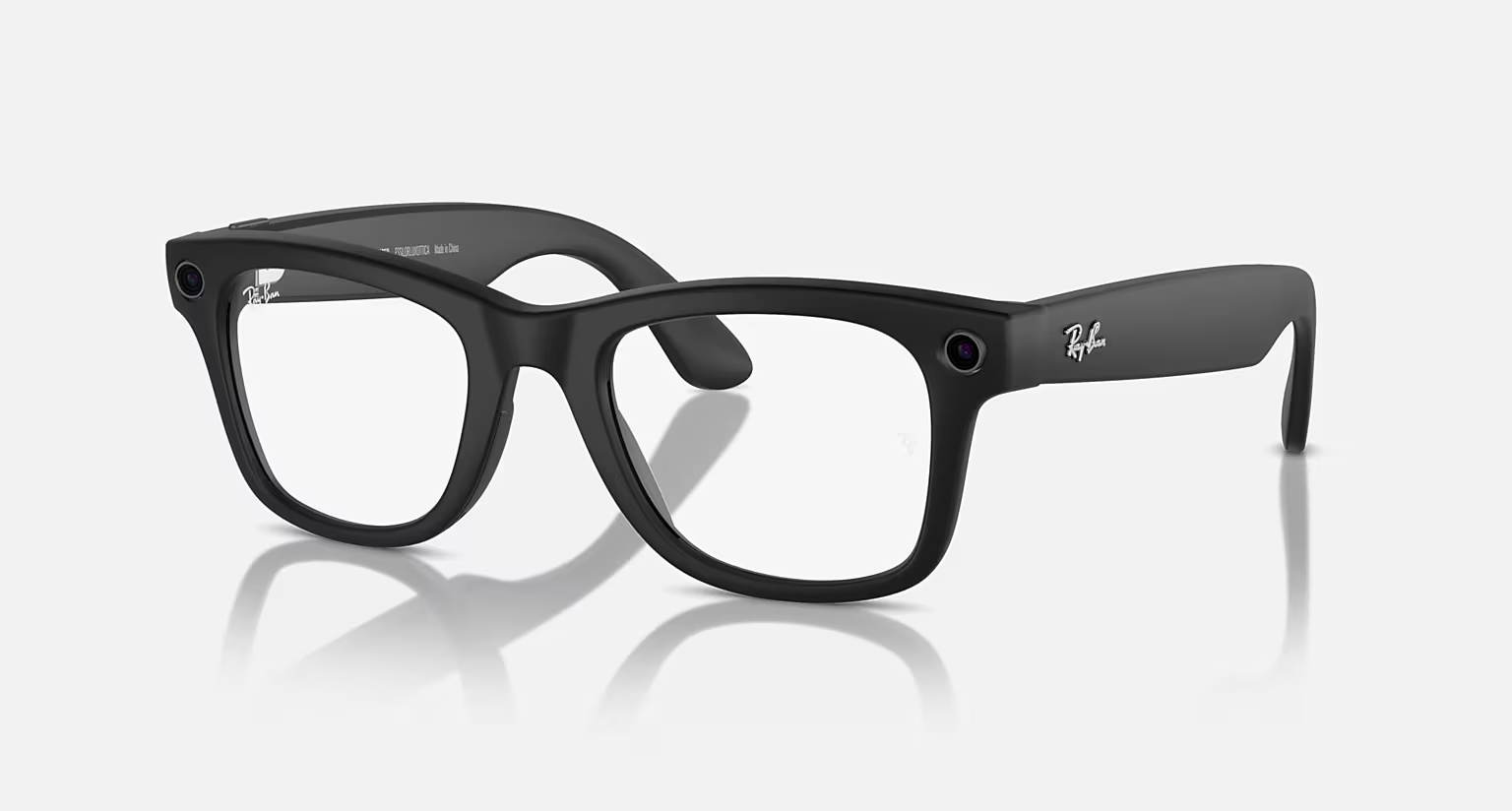
Image from the official website
The case was part of the package, which is also the charger of the glasses. I was really pleased by the high-quality material of the case and how well the glasses fit into it. It doesn't matter that I bought it in the UK, where they use a different socket than in Hungary because the case can be charged with a universal USB-C cable.
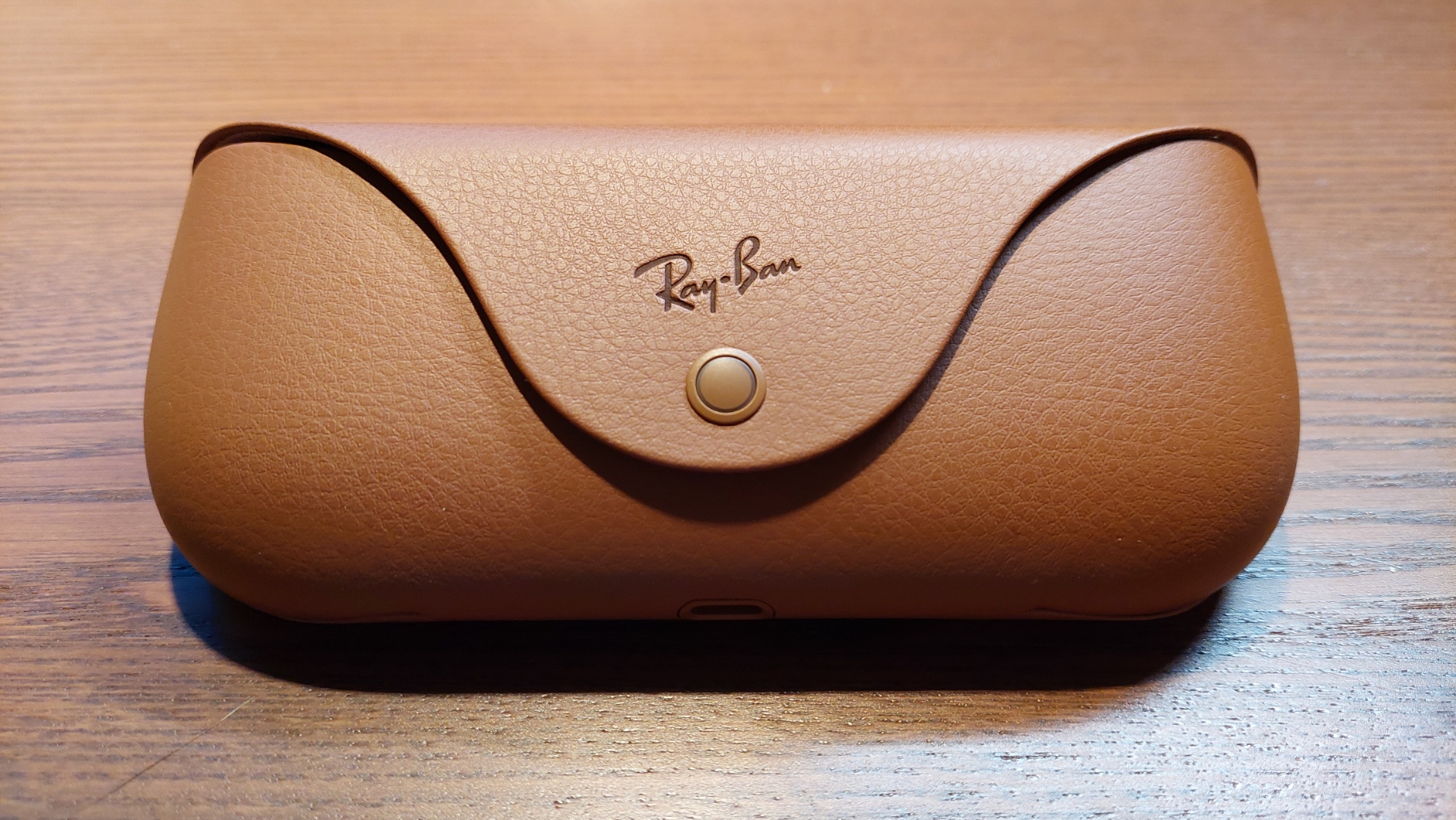
My first question to the salesperson at the airport store was whether the smart glasses would work on Android, as there was a note in the store saying that the glasses were "Made for iPhone". But to my delight, they said that if I can install the Meta View app on my phone, the glasses will work just fine. And since I already downloaded the Meta View earlier for testing purposes, I knew I won't have any problems with that.
Pairing With Samsung
Although the FAQ doesn't mention my phone in the complete list of compatible devices, it worked just fine with my Samsung Galaxy A52s 5G. Simply put, the smart glasses are compatible if you can install the Meta View app on your phone. The salesperson was right.
Pairing the glasses was relatively easy. I had to push the button on the back of the case for 5 seconds until the LED on the front started pulsing in blue. After this, my phone could find it, and the glasses appeared on the available Bluetooth devices list. From this point on, pairing was as simple as pairing with any other Bluetooth device.
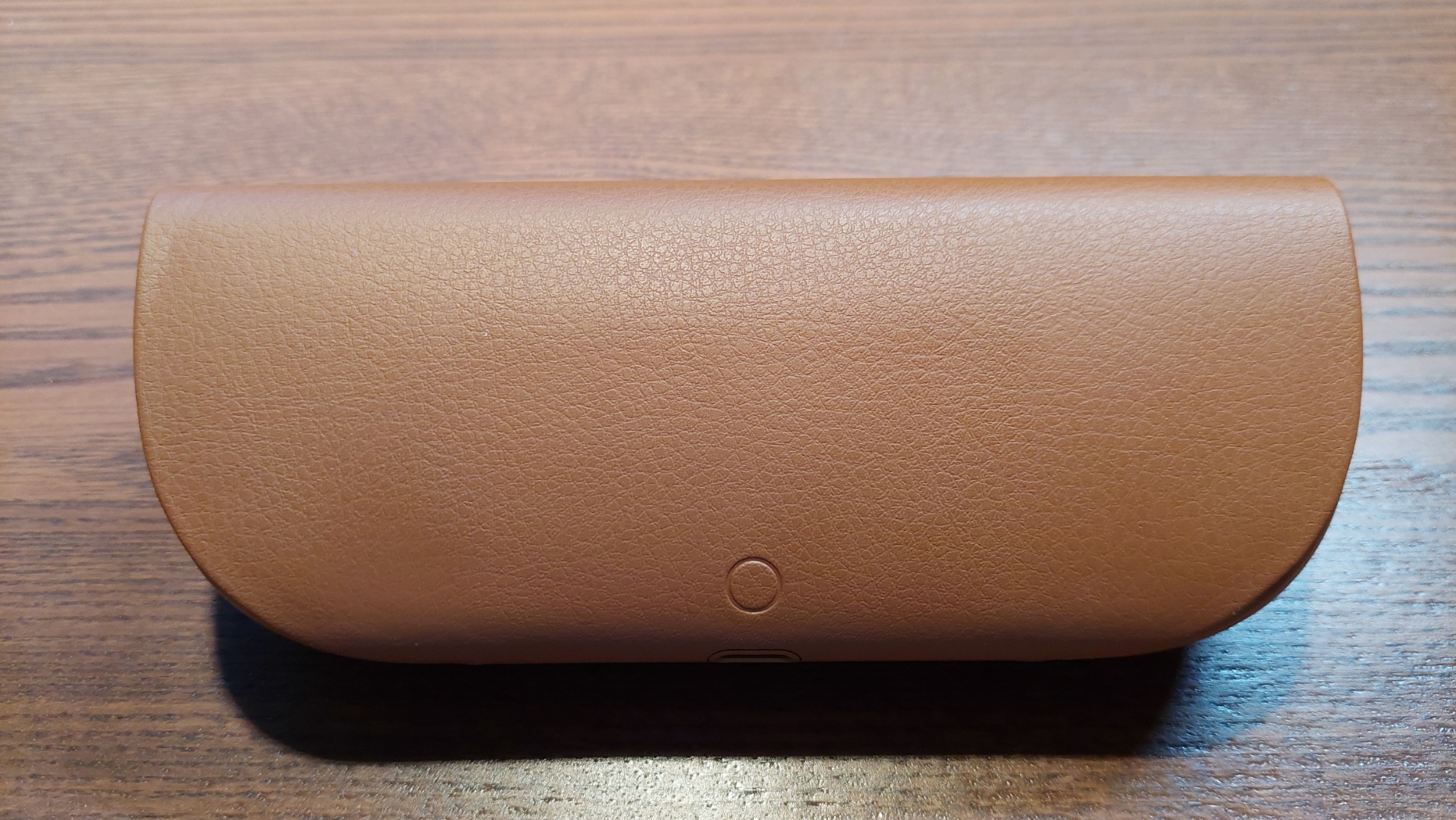
After pairing, some tutorial steps showed some of the features and interactions the glasses support, but let's see the complete list instead.
Features
The feature list is also available on the official website, however, it contains no personal experiences. Find mine below.
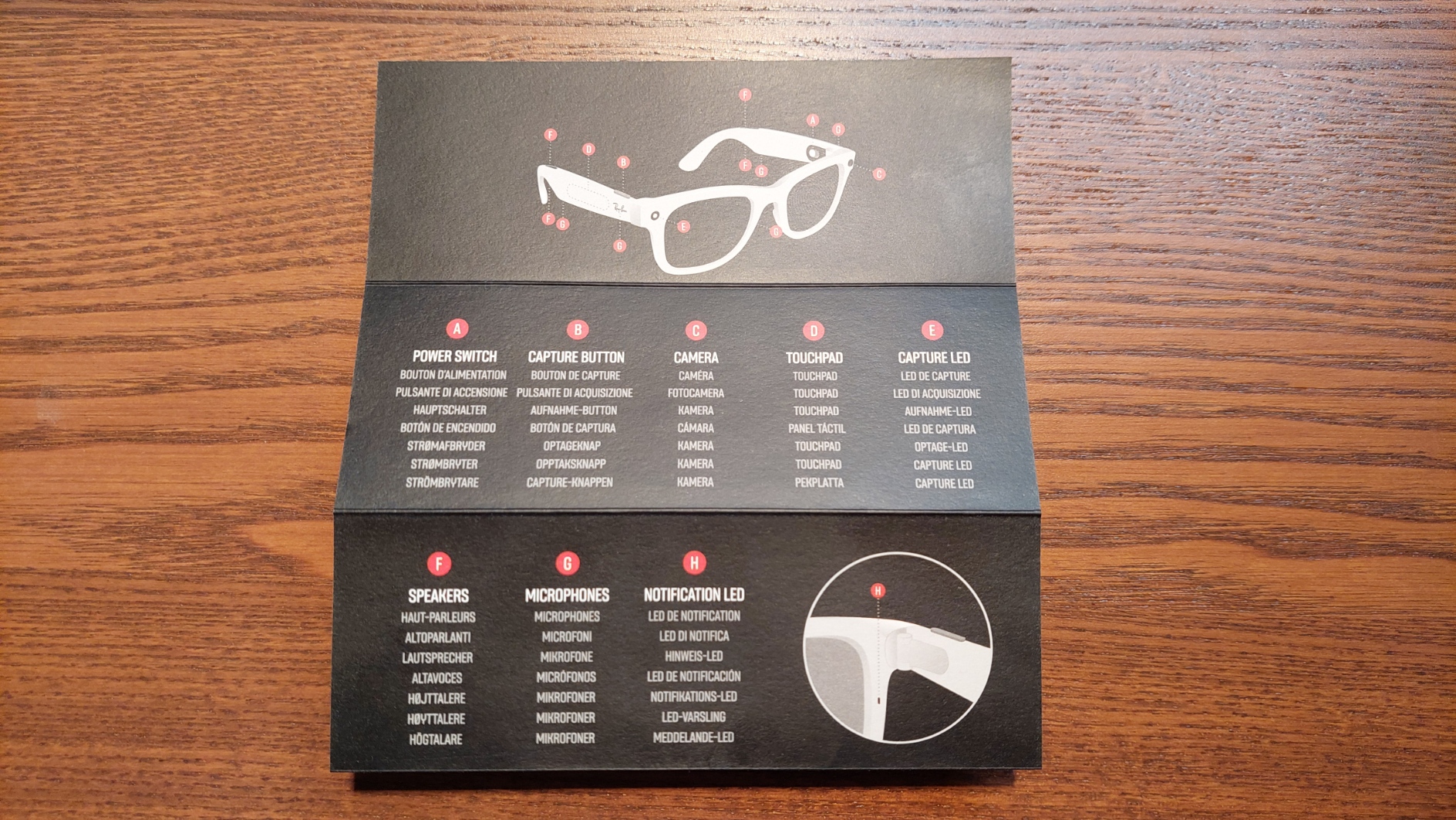
Camera
The 12 MP camera might be the most visible extra on the glasses, as it replaces the iconic Ray-Ban rivets on the front together with the status LED that shows when the camera is on.
For privacy purposes, there is no option to turn off the status LED, so you cannot record or take a photo of anyone without them knowing it. There is also a status LED on the inner side of the frame that notifies you when the camera is on. The glasses take incredibly clear photos, although they are not the highest resolution on Earth, but that's what 12 MP gets you, so that's totally okay.

Taking a photo is as simple as pressing the capture button once on the top of the right temple. You can also take photos using only your voice, but more on that later.
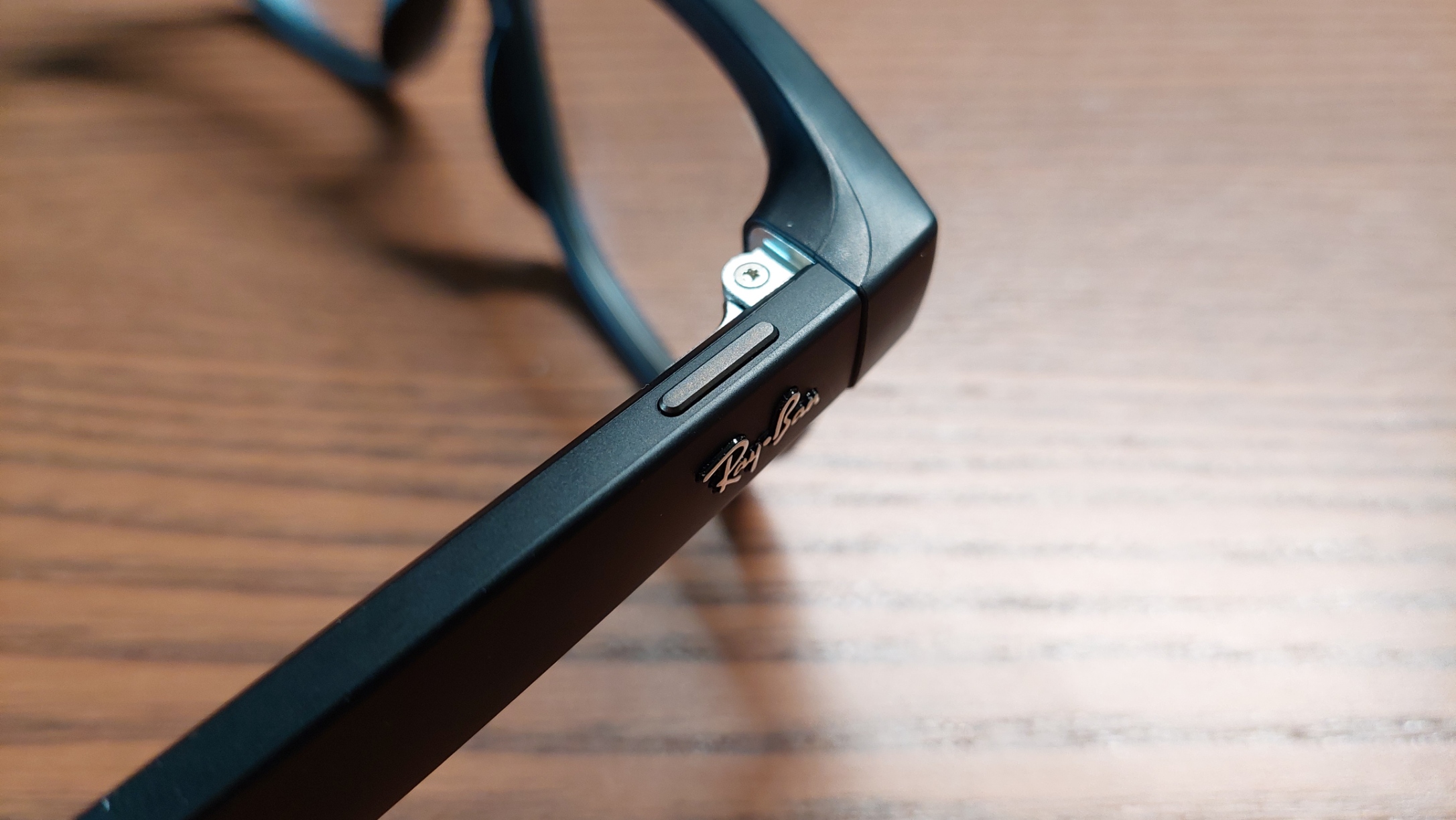
Recording a video isn't complicated either: you must keep pressing the button for about a second. When the recording is on, both LEDs will light up. The recording will automatically stop after a predefined period or if you press the capture button again. The predefined duration can be 15, 30, 60 seconds, or 3 minutes long.
You also have the option to switch up the two interactions. A setting in the Meta View app influences whether a single press takes a photo and a continuously pressed button records a video or vice versa.
Taking photos and videos also works if the glasses are not connected to your phone as they have a 32 GB internal storage. Once the phone is connected again, files can be synchronized to the Meta View app.
Speakers
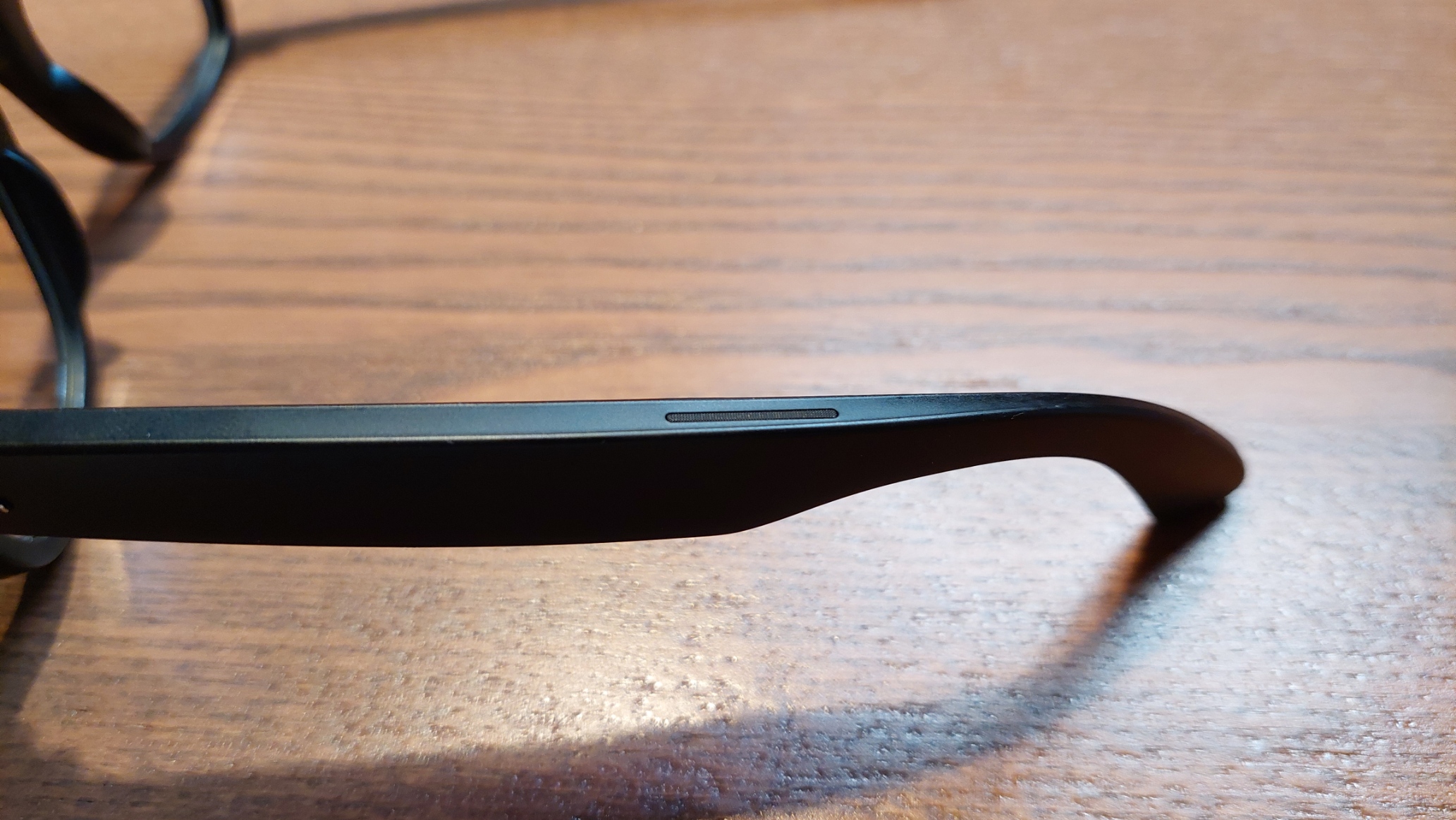
I counted four speakers on my smart glasses: one on the top and one on the bottom of each arm, right next to my ears. They are also visible in the image about the features a few paragraphs above. As it is not a headset, these open-ear speakers can also be heard by others standing next to you.
Or so I thought.
As they are extremely close to your ears, sounds coming out of them do not have to be loud at all to be heard clearly. Most of the time, it cannot be noticed that you are listening to anything. If you set it to max, and someone is standing next to you, they might hear something similar to what you can hear when someone uses a headset with full volume on the bus, but nothing more.
An added benefit of the open-ear speakers is that you do not ignore the sounds of your environment. You can listen to music and still be aware of anything happening around you. For example, it is much safer to drive a car or ride a bicycle with your smart glasses than with a headset. But even walking can be considered safer this way.
I am not saying that I prefer it for listening to music over headphones. Not at all. It's just that there are definitely some situations where it has an advantage over headphones in terms of listening while simultaneously also being aware of the world.
Finally, many studies claim that headsets will cause hearing loss in our generation in a few years. I don't have a comparison of this, but I wouldn't be surprised if listening to open-ear speakers was less harmful than their plugged-in counterparts.
By the way, the speakers are totally fair. Do not expect the most intense bass from them, but they serve normal needs perfectly. Phone calls, listening to music, or speaking to Meta AI work as intended. If there isn't extreme noise coming from the world around you, you can hear anything clearly.
Audio Controls
You can also control music on your smart glasses like you would on any other Bluetooth headphones. A single tap on the right arm starts/pauses music, two taps skip to the next song, and three taps jump to the previous one.
You can also control the volume: a forward slide on the arm increases, and a backward one decreases volume.
Finally, another convenient feature is that if you take off the glasses, the music stops and automatically starts once you put them on again. This option can also be turned off in the settings.
Microphones
Microphones are tricky because they are hidden extremely well on the glasses. It's easy to count three of them: two are next to the speakers, and one is at the bottom part of the bridge. I could only find the last two when I checked the feature description, as they are in the middle of the Ray-Ban logo on each side, making them almost impossible to notice.
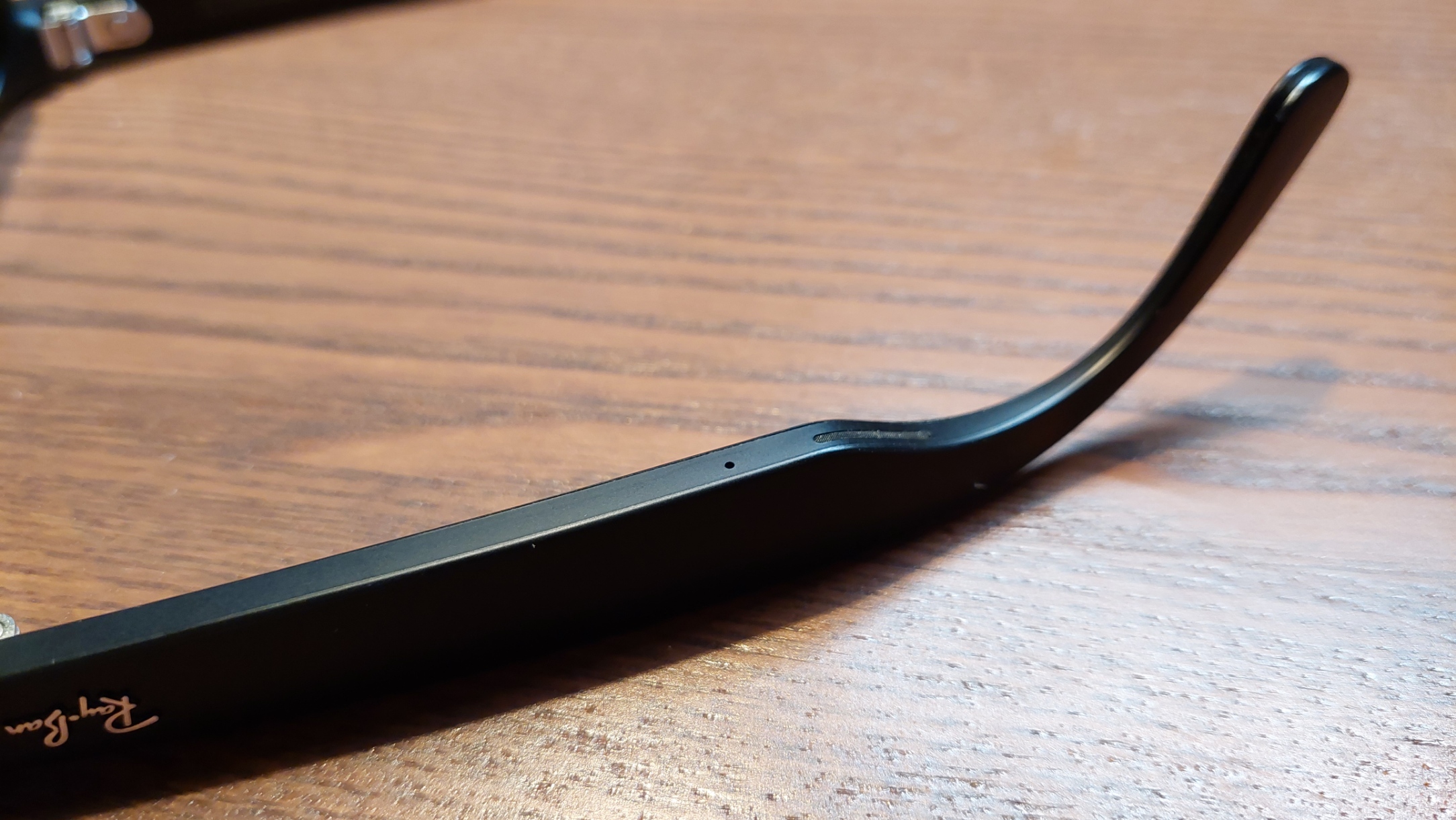
I spoke with others over the phone multiple times while wearing the glasses, and none of them mentioned that I sounded strange or anything like that. When I mentioned that I was currently speaking from my glasses, everyone was surprised, as they thought I was using my phone.
I had this problem with some low-budget headphones earlier and noticed it while speaking to others who had them. In some cases, I couldn't even hear a single word clearly. There was absolutely no such issue with the Meta glasses so far.
Finally, the microphone's most unique feature is that it allows you to speak to Meta AI.
Meta AI
I probably shouldn't even have to mention that the Meta Smart Glasses' most prominent feature is the built-in AI assistant.

Image from Facebook
You can wake it up by simply saying "Hey Meta", "OK Meta" or by keeping your finger on the right arm for about a second. You can also change this gesture in the settings to invoke a music streaming application instead or not do anything at all.
You can also invoke Meta AI by keeping three fingers on the right arm for a second, although this feature is turned off by default in the settings.
Once Meta AI is active, the inner status LED will start blinking, and as long as it is actively listening, it doesn't stop doing that. It isn't obtrusive at all. If I am not intentionally looking at it, I barely notice it, but it is useful when a longer conversation is running.
It is highly convenient that I do not have to say "Hey Meta" before every question, as there is an option that enables the assistant to keep listening for a few seconds after answering a question. If the LED blinks, I know the assistant is listening, and I can continue speaking. I only have to say "Hey Meta" again if I don't see the LED anymore.
The assistant can control every feature of the glasses. I can manage the music and the camera with it, post to social media, and send messages. I still have to try the last two, though. It also has access to the camera. I can ask questions about my surroundings, and the assistant will answer accordingly.
To my surprise, Meta AI is pretty up to date. It can easily list the top news of the day and look up recent information on the Internet.
I don't know exactly which model is running in the background, but it only takes a software update to change to the latest model, so regardless of when you bought your glasses, they can have access to the latest model, like Llama 3.1, after a simple update.
There is only one problem with it: it doesn't work outside of the States.
Access Meta AI Outside the US
Geo-blocking is usually a question of compliance, but if the users want to have access to something that's blocked in their location, there is usually a way around it. And this way is called a VPN.
However, it isn't that simple. Once the glasses are paired with your phone, it's game over. They know where they are, and the assistant will always say:
"I can't do that on your glasses."
I found a comment on Reddit where someone found a workaround to still enable Meta AI on their glasses. I followed the instructions (without having too much hope), and to my surprise, they worked! Here are my steps in a nutshell.
- I disconnected my glasses, logged out of the app, and cleared every data and the cache. I also disabled location access for the Meta View app so that it is not aware of my position.
- I connected to a US VPN.
- I created a new Facebook account (you need this to log in to the Meta View app).
- I reset my glasses.
- I connected the glasses again to the app. This was tricky because the app kept saying that location was required to connect the glasses. I briefly turned it on, went to the next setup step, turned it off, waited for the popup, and so on.
- Finally, it worked.
I have to pay attention to never give location access to the app, but that's it. With this workaround, the glasses work even if I do not turn on the VPN. It was only needed during the initial setup.
Another feature that doesn't work without location access is the automatic synchronization of images to the app via a connected WiFi network. Location access must be enabled to connect to a WiFi network. However, the glasses still synchronize images when they are put back in the case and are still connected to my phone, so I don't miss this WiFi network feature.
To be honest, I am not a hardcore user of the assistant yet, but it is good to know that I have access to it. However, I regularly use the glasses' other features. My initial motivation to buy it was to be able to take pictures during hikes without having to get my phone every time.
Also, I needed new sunglasses because the previous one I bought last summer for ~€5 literally disintegrated in its case in a year. When I took it out, it was in three pieces. That's on me, though. That's what you get for €5, I guess.
They Are Sunglasses
Apart from every cool feature I listed above, I almost forgot to mention that the glasses I bought also function perfectly as sunglasses. In fact, that's their primary feature. I intentionally bought the version with transition lenses because I can also wear them inside without others looking at me like a fool.
At this point, it's worth mentioning that the Meta Smart Glasses are also compatible with prescription lenses.
Battery Life
Meta claims that the glasses can last up to 4 hours for moderate usage, and they actually delivered on that claim because I could listen to music for hours before I had to charge my glasses again. It lasted even longer when I was just wearing my glasses and taking some pictures occasionally.
When the glasses are put back in the case, they can be recharged 8 times, bringing the total charge to 36 hours without having to recharge the case. As I mentioned earlier, the case has a USB-C charging port, which is the default on almost every device nowadays.
Naturally, the activities that drained the battery the most were continuous video recording and listening to loud music.
Power Switch
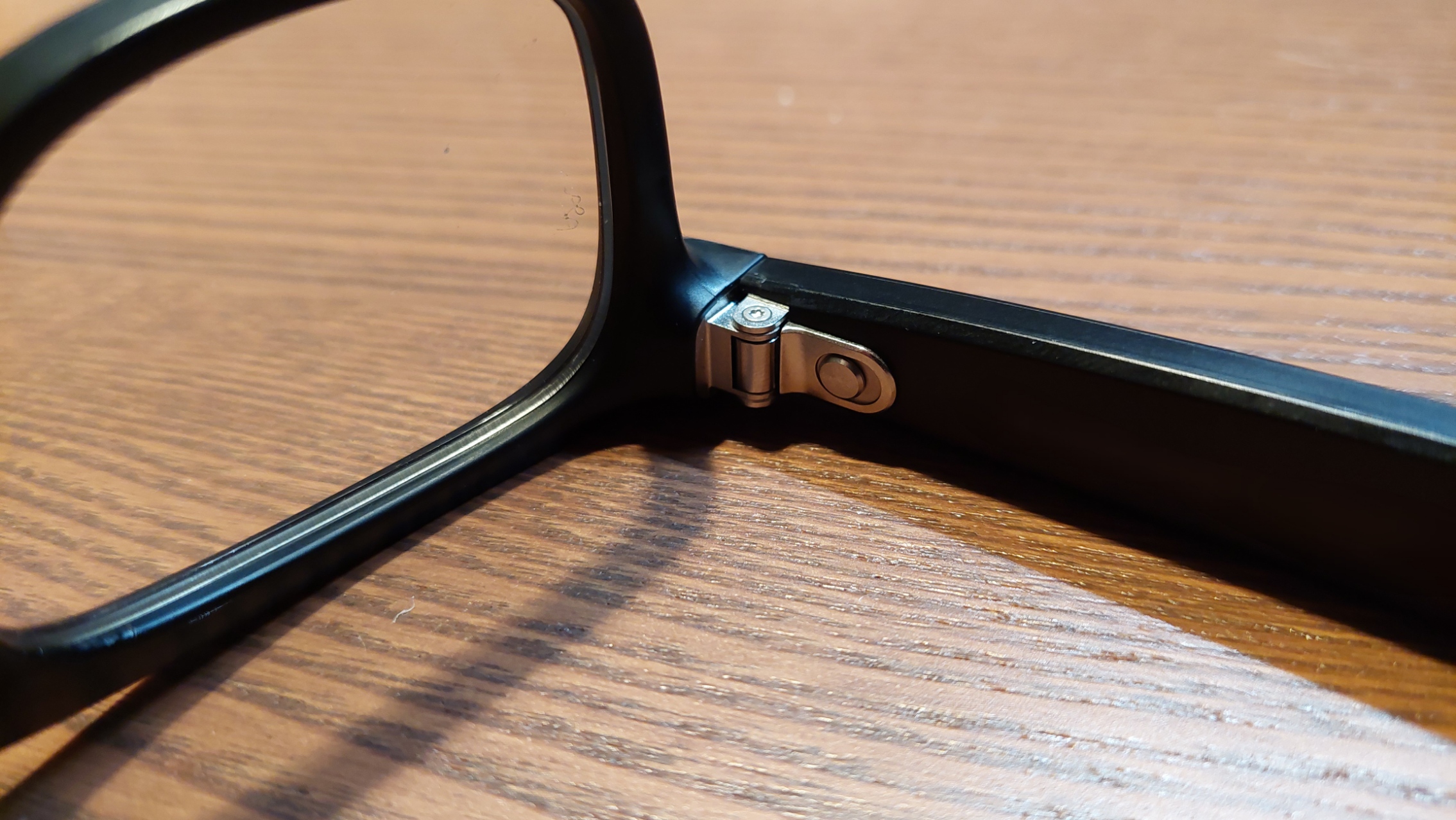
There is also a power switch right next to the right hinge, in case you want to use your smart glasses as regular sunglasses without any of the extra features.
The Meta Ecosystem
As Meta produces the glasses, it is natural that you can connect them to most Meta apps, including Messenger, WhatsApp, Instagram, and Facebook. On Instagram and Facebook, the glasses can post Stories, and on the rest, they can initiate calls and send messages.
However, I haven't tested these features yet as I am rarely posting anything on these socials.
Disadvantages of the Meta Smart Glasses
I already mentioned some features I didn't like, but let's collect them in a single section as well.
First and foremost, even though the battery life is decent, I sometimes felt it was a bit short. However, they found the perfect balance between battery life and making the glasses too heavy to use for longer periods comfortably.
Second, I dislike geo-blocking and the need for a workaround to use Meta AI, but I completely understand the regulatory pressure behind the decision. They will hopefully unlock it officially in more places in the future.
Finally, I would be happy if I had the option to choose the aspect ratio of the images and videos I can take and record with my glasses. There was another review on Wired where the post mentioned that these are rather social media glasses instead of smart glasses as the only supported ratio is 3:4, the ideal one to share images on Meta's social media platforms. There's some truth to this statement, but at least the images and videos they produce are crystal clear both in terms of visuals and audio. Also, it's not the worst format at all. Most of us use our phones in portrait mode anyway. It's just that it would be great to have the freedom of choice.
But let's finish this review on a high note.
Hidden Benefits
I already mentioned one hidden benefit earlier, which is to stay aware of my surroundings while listening to music on my glasses. By the way, this feature is also mentioned on the official website of the glasses making it less of a "hidden" benefit, however the next one is a finding on my own.
The videos I have captured with my glasses so far are almost as stable as if I had taken them with a gimbal. It is simply impossible to hold my phone completely still in my hands when recording anything, even if I pay extra attention to it, but this is not the case with my neck. If I look in a direction, there is barely any movement. This results in extremely stable videos almost every time, much better than manual phone recordings.

Also, recording with my glasses means I can be in the moment instead of just recording the moment because I don't have to constantly check my phone to see whether I moved it away from the target. With my glasses, I simply look where I would look anyway and start recording.
Review After a Month of Usage
I have been using my glasses regularly for the last ~30 days. The initial hype wore off a bit, but I am still satisfied with my purchase and don't regret it at all — quite the opposite! I am happy that I could buy them so quickly somewhere. Let's see my most used features.
I am listening to lots of music with my glasses. During this time, I also discovered another hidden benefit. When I am standing before the cashier in a store, I always stop the music until the interaction ends. When using a headset, I used to take it out of my ears not to look rude, even though I stopped the music. This little issue disappeared when I was using my glasses, as I could pause the music, my ears were not covered, and I could hear anything.
Since I bought the glasses, I have also taken many photos and videos. Auto-synchronization to my phone still works, even though I never attached a WiFi network in the app. I just have to put the glasses back in the case and keep them connected to my phone.
I played with Meta AI a few times, but honestly, it still feels unnatural and strange for me to do that. I predict that this will come sooner or later, but right now, I only speak to it when I am alone.
However, I spoke with others over the phone multiple times, even in crowded places, and they sounded extremely clear every time. The sound quality is simply unbelievable.
Let's see some words about battery usage. Since I bought the glasses, it has only happened once that they ran out of power while I was using them. In all of the other cases, I put them back in the case before they were out of juice or they warned me. I reached the 15% level several times when they warned me that the end was near, but that's it. Battery life was enough in most cases.
Finally, after some hours of usage, the glasses started to feel just a little bit heavy on my head. I think its weight is just in the right spot — it has enough battery life and isn't too heavy to notice instantly — but a couple of hours of usage was enough to start feeling it being a little too heavy.
Rating
Overall, I rate the Ray-Ban Meta Smart Glasses 8/10. This rating will increase to 9/10 once Meta AI is available everywhere without requiring any tricks to make it work, which is probably just a question of time and an upcoming software update.
September 2025 Update
I had my glasses for over a year now, and I have to say that I am still very happy with them. Even though the initial hype wore off a bit, I am still using them regularly especially in the summer on sunny days.
I am always extra careful when I am wearing them as many others mentioned that even a tiny amount of water can damage the glasses. If it looks like it's going to rain, I take them off and put them in the case. I never had any issues with them so far, and they are in perfect condition.
Another important thing to mention is that I got partial access to Meta AI with the latest update. I still cannot ask Meta about what I am seeing (for the same reason, restyling images doesn't work either), but I can ask about anything else that requires an internet connection, like news, current location, currency exchange rates, or the weather, just to name a few.
All of this with no VPN required. Since I bought the glasses, I have also upgraded my phone and I didn't want to go over the trouble of pairing them again through the hacky VPN workaround. I wasn't using Meta AI much anyway, but at least now I can use it normally (except the vision part).
This latest upgrade increased my rating to a solid 8.5/10. Give my glasses vision, and it will be a 9/10.
